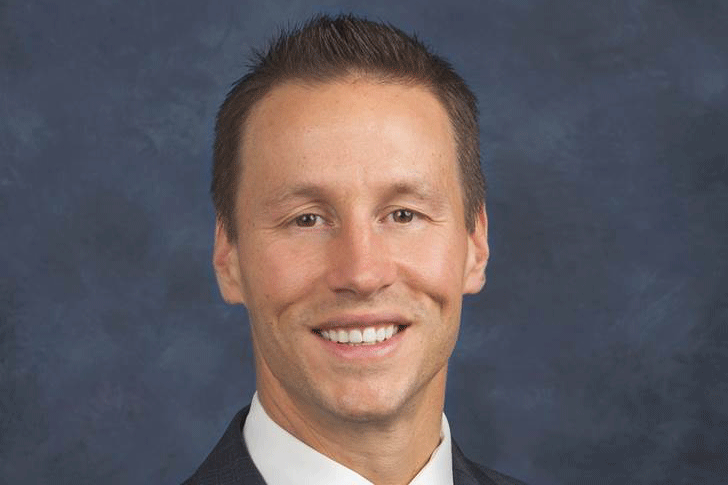
INLAND EMPIRE, CA—“The entire commercial real estate community must understand that our role in defending the industry is critical, especially in California.” That is according to Justin McCusker, NAIOP SoCal board member of legislative affairs, chair and senior executive at C.J. Segerstrom & Sons. “It is no longer simply enough to state our case relative to the laws impacting the future of business and our industry, we must also educate as to the value of our industry at the local, state and national level. Our chapters are at the table with the elected officials who are making decisions that impact not just our businesses but the future of the State where we do business.”
In early February, senior level board members from NAIOP SoCal and NAIOP Inland Empire traveled to Washington DC to meet with elected officials. The goal of the trip was to discuss priority issues for the commercial real estate industry in California.
As for why that meetings and meetings of that nature matter, NAIOP said that commercial real estate development in California is a powerful economic engine, creating jobs and generating significant fiscal contributions. “In 2017, our industry contributed $52.7 billion to the state economy (GDP), created and supported 333,817 jobs and $17.7 billion in wages and salaries. Our voices are important, relevant, needed and valuable.”
Some of the priority issues the SoCal chapter addressed during the meetings on Capitol Hill include the following:
Realistic Approach to Federal Clean Air Standards Needed
“South Coast Air Quality Management District staff has said we cannot achieve the current air quality standards because nearly 90% of the emissions in our region come from mobile sources, (trains, planes, ships, cars and trucks) which are under the jurisdiction of the State and Federal governments. Southern California is committed to working to achieve cleaner air, but cannot be held responsible for mobile sources that are completely out of our control,” said the chapter. Changes recommended by our chapters include (in the chapter's words):
* Our region should be provided credit for the state and federal sources we do not control in analyzing our attainment issue.
* The Clean Air Act should require that State and local air quality regulatory agencies prove the technological achievability and economic feasibility of any rules or regulations. We currently face rules for which the technology does not exist and/or sufficient funding is not available which is unrealistic.
* The Clean Air Act should not allow State and local air quality regulatory agencies to use so-called Indirect Source Rules (ISRs) that attempt to make stationary sources such as buildings responsible for mobile source emissions. Commercial properties cannot be held responsible.
* The deadline to meet the new 70 ppb ozone attainment level should be extended for our region, and the standard should not be lowered any further.
California's Infrastructure – Transportation and Goods Movement
“California's transportation infrastructure needs massive improvements to keep up with transporting its growing population and the movement of goods through the state to the rest of the nation. Solely due to its location and large ports, Southern California is critical to moving the needed, and wanted, goods and supplies to the rest of the country. An effective goods movement system is a national issue. In order to meet current and future transportation demands Southern California needs, at the very least, its fair share of Federal transportation funds. In addition, the California Environmental Quality Act (CEQA) is at least, if not more, stringent than the National Environmental Protection Act (NEPA) in environmental protection. Thus, California projects should be made exempt from NEPA. We need to expedite Federal approvals and permitting of infrastructure projects. Federal agencies need prompt timelines to act on permit requests and, if they do not act, then the project should be deemed permitted. They should also support the use of public-private partnerships; develop new tax incentives that encourage private investments for infrastructure improvements; and create a national infrastructure bank,” the chapter said.
Poverty and Lack of Middle Class Jobs Must Be Made a Top Priority
“California now has the highest poverty level of any State in the nation. Approximately 20% of the state population lives below the Federal poverty line. In Southern California, the number of people living in poverty is staggering. Nearly 3 million people and about 25% of all the children in the region are in poverty. Our chapters believe the best way to reduce poverty is through developing good quality jobs, not more government programs. Current job growth has been in the lowest paying jobs, not middle class jobs. The middle class jobs lost in the last recession have not returned due to over burdensome government regulations. Creating quality middle class jobs is also a social justice issue. At the Federal, State and local levels, there needs to be a serious, realistic discussion about how to remove barriers to job growth, and incentivize the development of middle class jobs or the above facts will not change, except maybe to worsen for California.”
© 2025 ALM Global, LLC, All Rights Reserved. Request academic re-use from www.copyright.com. All other uses, submit a request to [email protected]. For more information visit Asset & Logo Licensing.








